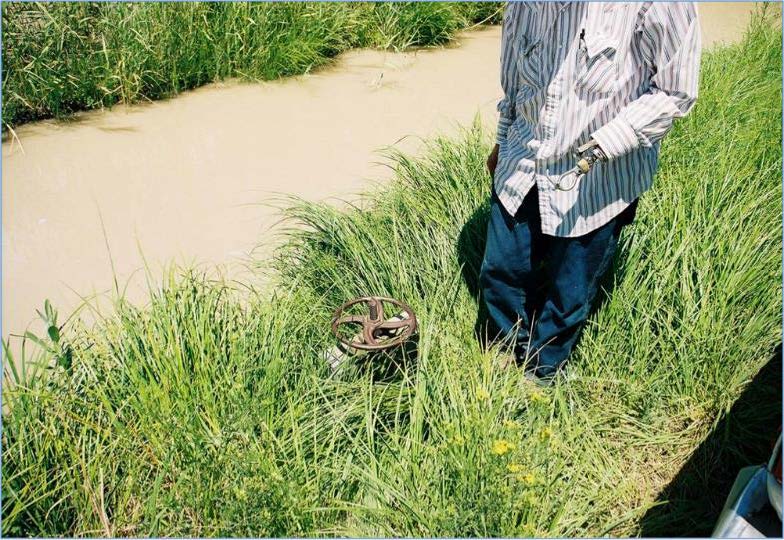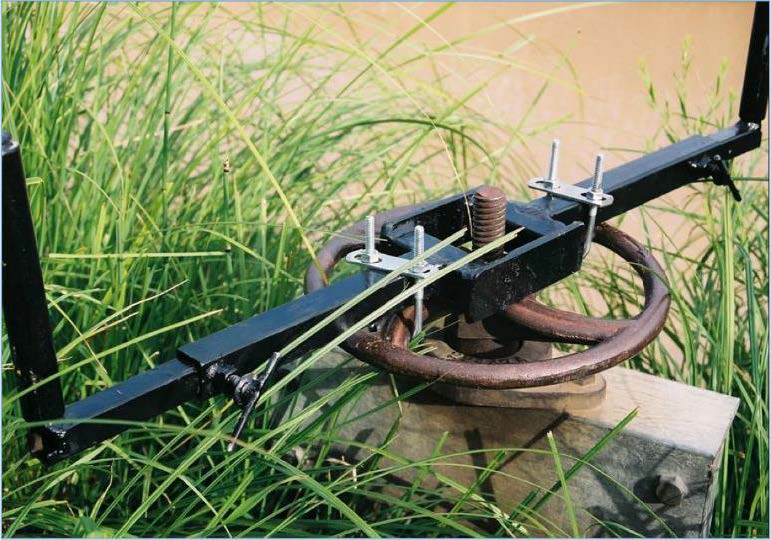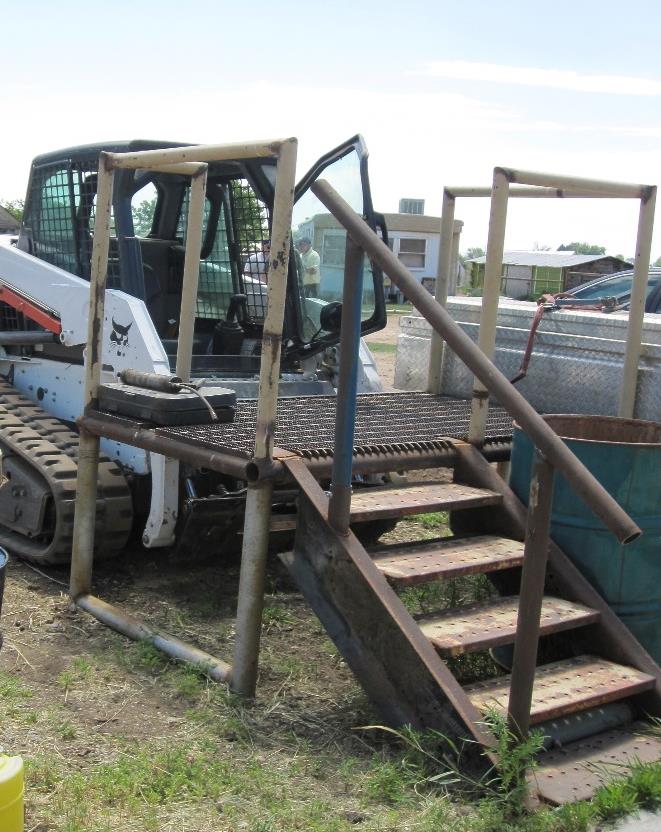Farming with an Amputation
Farming is one of the most dangerous occupations in the United States. The rate of injury for agricultural workers is 40% higher than for all other types of work.1 Furthermore, estimates suggest that injuries resulting in amputations are “2.5 times more likely to occur in farming than in any other industry.”2 Taken together, this means that farming or ranching with an amputation is not uncommon.
Losing a limb is an extraordinarily traumatic experience; however, recovery and return to farming are possible. Amputees can learn do their jobs in a slightly different way, can be fitted with prosthetic devices that will assist them in their work, and can continue to farm and ranch successfully if they implement the right assistive technology (AT) and make efforts to avoid further injury.
Dealing with an Amputation
For those who are farming after an amputation, some situations will require special attention. Trying to simply return to old ways of doing things may put a person at risk for further injury. Take some time to consider the following:
Initial Adjustment:
Unlike in the general population where amputation typically results from disease, limb loss in agriculture often comes as the result of an accidental injury or contact with equipment. This type of experience is traumatic, and emotional recovery can be difficult. Farmers and ranchers must do what they can to not only have their physical needs met, but to be proactive in seeking help for the needed mental and emotional adjustments.
- Rehabilitation. Do as much of your prescribed rehabilitation as possible. Many farmers and ranchers shorten their rehabilitation period because it is difficult to access proper facilities from rural areas. Investing yourself in good physical rehabilitation is rarely time wasted. You can make this time more productive by encouraging your therapist to focus your sessions on readying you for job tasks on the farm.
- Adapt Routines. It often takes time to learn to compensate for limb loss. Be open to alternate ways of completing chores and modifying important job tasks. Use assistive technology when possible to reduce barriers (Figure 1).
- Be patient. Work through emotional and mental stress with a professional, if needed. Being aware of your mental health can help you move through the stages of coping with limb loss and toward acceptance and resilience.
- Find a mentor. Talking through challenges with a peer who has been in a similar situation can help you consider options and find solutions.


Prostheses in Farming:
Although innovations in prosthetic devices are occurring at a rapid pace, farmers and ranchers can experience difficulty in finding a prosthetic device that meets the demands of the farm.3 Prosthetic devices are often not durable enough to hold up to farm work tasks and exposure to the weather and elements. Find a prosthetist that is willing to build what you need and train you on how to use the device on the farm.
- Keep it simple. Complex and high tech devices - such as myoelectric prostheses - do not function well under adverse conditions involving water, dirt, dust, and hammering. For farming, the device should be easy to clean and require little adjustment and repair.
- Educate yourself. Spend time learning how your device works, and ask questions of your therapist and prosthetist. They may not be familiar with the work you need your prosthesis to perform. Discussing your needs can help them teach you how to get the most out of your prosthesis.
- Do not modify a prosthesis yourself. Farmers are known for their ingenuity, but many farmers have been injured due to improper modification of a prosthesis. If a prosthesis needs modifications or repairs, work with a professional. Even slight modifications can lead to immediate or long-term injury through improper fit or use.

Safety and Secondary Injury:
Secondary injury is a particular concern for people with amputations.4 Being aware and taking action to reduce the risk of secondary injury is an important part of successful recovery and productivity. People with amputations or using prosthetic devices are at increased risk in a number of situations.
- Slips and falls. Slips and falls are common and not completely avoidable. Using proper hand holds, steps, mobility devices, and other applicable assistive technology can help reduce the risk of falls (Figure 2).
- Entanglement of a prosthetic device. Lack of sensation and control of a prosthesis can increase risk of becoming caught or entangled. Take extra care when working around livestock, climbing ladders, and working around moving parts on equipment. Consider requesting a quick release harness for upper extremity devices.
- Back pain. Extra weight from an upper limb prosthesis can lead to back pain. So can using the back to compensate for the inability to bend a knee to lift with a lower limb prosthesis. Make efforts to avoid over-exertion, and discuss concerns about back pain with your doctor.
- Overuse. It’s natural to compensate for the loss of a hand, arm, or leg by relying more heavily on the non-affected limb; but, overuse can result in pain or injury. Use clamps, gripping tools, mobility devices, and other assistive technology when possible to reduce the demand on the non-affected limb.
Special Health Considerations:
An amputation site requires care to avoid irritation and injury.
- Stump health. A prosthesis can cause irritation. Make sure the device fits well, and use extra caution in extreme weather conditions. Heat can cause excessive sweating, resulting in skin irritation or poor prosthetic suspension. Extreme cold can lead to frostbite due to decreased sensitivity in the stump area.
- Phantom pain. Phantom pain is common with amputations. Ask your doctor and therapist for techniques on how to manage pain effectively.
Assistive Technology
Using assistive technology can facilitate changes in work routines following an amputation. Anything that can provide mechanical advantage or make a task less physically demanding is a good fit. The following assistive devices may be helpful:

- Extra steps and/or hand holds for improving access to tractors and other equipment
- Specialized knobs to accommodate a hook or other prosthetic terminal device
- Hand controls on foot pedals or relocating hand controls to the non-affected side (Figure 3)
- Specialized seating or suspension systems to minimize shock and increase balance
- Livestock handling equipment that protects the operator from animals and places them at the proper working height
- All-terrain mobility devices, such as ATVs and UTVs, to reduce the need to walk over uneven ground
- Lifts to elevate the operator and facilitate access to the tractor platform
- Specialty gloves for improved gripping
- Specialty hand tools, such as one handed hammers
- Automatic gate openers
- Vehicles with automatic transmissions
- Herding and Service Dogs
- Boot valet to help pull on boots one-handed
Conclusion
A traumatic injury resulting in amputation does not have to mean the end of productive farming. Changing your work routine and discussing your needs with a trusted doctor and/or prosthetist are the first steps in making your new situation work for you. Keep safety in mind, plan extra time to get your work done, and consider assistive technology to help perform demanding tasks.
References
- 1 Bureau of Labor Statistics (BLS) United States Department of Labor. Occupational Injuries and Illnesses and Fatal Injuries Profiles database queried by industry for Agriculture, Forestry, Fishing, and Hunting (GP2AFH) – Crop Production & Animal Production. Retrieved Nov 24, 2014.
- 2 Zhou, C., and Roseman, J.M. (1994). Agricultural injuries among a population-based sample of farm operators in Alabama. American Journal of Industrial Medicine, 25, 385-402.
- 3 Waldera, K. E., Heckathorne, C. W., Parker, M., & Fatone, S. (2013). Assessing the prosthetic needs of farmers and ranchers with amputations. Disability and Rehabilitation: Assistive Technology, 8(3), 204-212.
- 4 The Easter Seal Society. Safety tips for farming with upper extremity (arm) limitations.
Authors
Rhonda Miller, Ph.D., and Anne Brown-Reither


